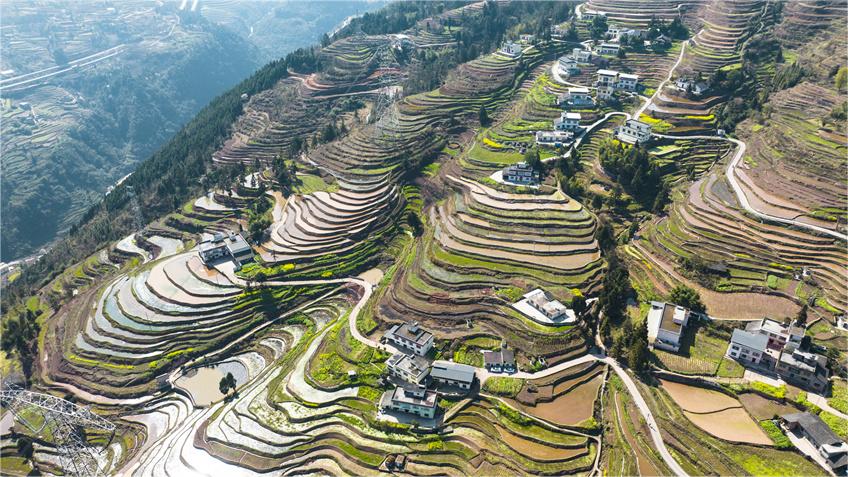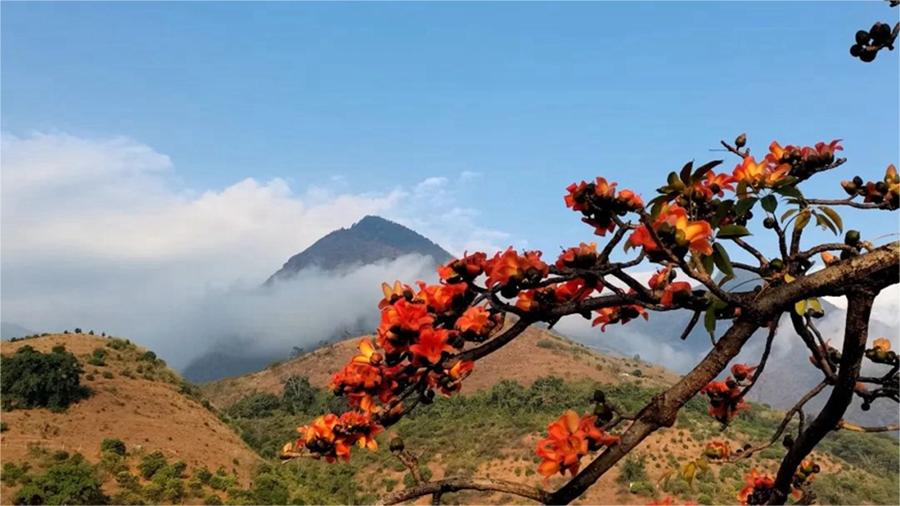New study reveals plateau's evapotranspiration changes

Aerial photo shows the scenery at Mt Nyanpo Yutse in Tibetan autonomous prefecture of Golog of Northwest China's Qinghai province. Qinghai province, located in Northwest China, much of which lies on the Qinghai-Tibet Plateau, is the home to the headwaters of the Yangtze, Yellow and Lancang rivers. [Photo/Xinhua]
Research: Findings are publicly available
A recently published study has pointed to the growing trend of evapotranspiration over the past four decades on the Qinghai-Tibet Plateau.
The study, led by Ma Yaoming, a researcher at the Chinese Academy of Sciences' Institute of Tibetan Plateau Research, offers a profound understanding of the water balance and climate impact in this ecologically significant area.
The research, based on data collected from 1982 to 2018, which was recently published in the journal Earth System Science Data, has revealed that the annual average evapotranspiration on the Qinghai-Tibet Plateau over the past four decades stands at approximately 346.5 millimeters, equivalent to 930 billion metric tons of water transferred to the atmosphere annually from the plateau.
Evapotranspiration is the process in which water is transferred from the land to the atmosphere by evaporation from the soil and other surfaces, as well as by transpiration from plants.
Ma highlighted the pivotal role of evapotranspiration in the region's water balance, particularly given the prevalence of alpine meadows and the dominant arid or semiarid climate on the plateau.
Chen Xuelong, another co-corresponding author and researcher from the institute, emphasized the significance of the findings.
"The research not only confirmed an increasing trend in annual evapotranspiration, at approximately 0.96 millimeters per year, attributed to the warming and humidifying climate of the plateau, but also identified soil evaporation as the primary contributor, constituting over 84 percent of the total evapotranspiration," said Chen.
The implications of the study are far-reaching, with the data holding a pivotal value for water resource management, drought monitoring and ecological environment research and analysis, Chen said.
The research represents a monumental step forward in understanding the Qinghai-Tibet Plateau's hydro-meteorological dynamics and also underscores the critical role of evapotranspiration in shaping the region's ecological and climatic landscape.
The plateau boasts the world's highest inland lake cluster. With global warming, lakes expanded and ice periods were shortened, and the growing trend in evapotranspiration was clearly observed, according to a previous research essay by Ma.
As a result, the water cycle process has significantly accelerated, manifested by increased precipitation, with the melting of glaciers and snow and the thickening of the active layer of permafrost, and this leads to frequent natural disasters such as ice avalanches, glacier lake outbursts, river floods and mud slides, which could affect people's life and economic activities, Ma said in the essay, calling for effective measures, including strengthening the comprehensive observation and tests on multilayered land-atmosphere interactions.
Ma said the recent study highlighted the importance of shallow soil water in the intricate water and heat exchange processes between the ground and the atmosphere.
The findings of the recent research have been made publicly available through the National Tibetan Plateau Data Center and the Science Data Bank, providing a crucial resource for further scientific inquiry and policy development.
Photos
Related Stories
- China sees more innovative, green development in Beijing-Tianjin-Hebei region: index report
- Advisers diligent in shaping environmental policy
- In Numbers: China's ecological environment improves steadily in 2023
- China's Blue Circle environmental initiative gives new solution to marine plastic waste
- China to promote development of over 100 'beautiful bay' construction projects this year
- Balancing ecological conservation with socioeconomic development
Copyright © 2024 People's Daily Online. All Rights Reserved.









